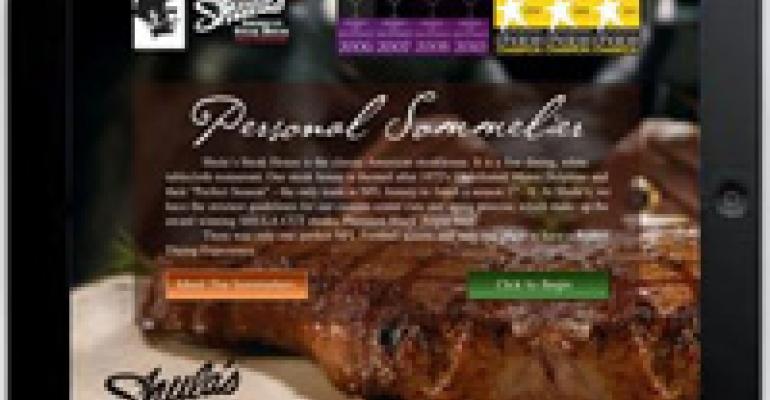 It seems that about the only thing iPads are not doing for restaurants these days is cooking.
It seems that about the only thing iPads are not doing for restaurants these days is cooking.
IPads—one of the most coveted gadgets in recent years—started popping up in restaurants last year, replacing everything from menus, to waitstaff, to live entertainment. Two recent developments caught our eye: a restaurant in New York claims to run entirely on iPads; and a steakhouse chain has mounted its hefty wine list on the electronic tablets to take some of the guesswork out of wines.
De Santos, a trendy Italian/American eatery in the West Village, equipped all the waiters with an iPad. Waiters can enter orders, which are sent to the kitchen wirelessly, swipe credit cards at the end of the meal and e-mail guests the receipt if they would prefer not to have a paper copy. The tablets can also be used to show guests what dishes will look like, whether they conform to special dietary needs and the nutritional breakdown, and they provide managers with instant sales information.
De Santos’s co-owner Sebastian Gonella told Inc. magazine that the iPads are more than just functional; they are also a fashion statement. Perhaps more important, they send a tacit message to guests: “we’re hip, young and cool.” Guests reportedly “love” the units.
The gadgets also eliminate the need for the waitstaff to trek back and forth between the POS and kitchen—freeing them up to spend more time keeping guests happy.
IPad wine lists have been spotted in high-ticket spots like L’Atelier de Joel Robuchon and French Laundry, but more approachable restaurants have started to embrace the technology after seeing what it does to wine sales. Shula’s Steak Houses saw an immediate impact after testing iPads at its Naples, FL, location. As a result, the company plans to roll out the tablets to all 32 Shula’s.
Designed by Hospitality Social, the application guides the guest through selection and helps pair wine with foods. Clicking on a wine label will produce tasting notes. Waiters hand the iPads to guests, offer a little guidance if needed and let the guest do the rest. Guests can search the list of 450 bottles by varietal, tasting notes, ratings and price point.
“This gives guests more of a comfort zone spending a little more money on a bottle of wine, because they can research it instead of relying on a server’s knowledge or what they perceive as an upselling attempt,” Shula says. It’s still early, but the returns have been very good, he adds, despite the fact that the average Naples customer is not necessarily the demographic for an iPod.
Shula’s spends $499 a month for the app, which powers up to 10 iPads. The tablets themselves are being subsidized by wine vendors, who understand the technology’s benefit to their business.
Hospitality Social c.e.o. Jack Serfass estimates that restaurants using the interactive applications see a 14-27 percent jump in wine sales.





